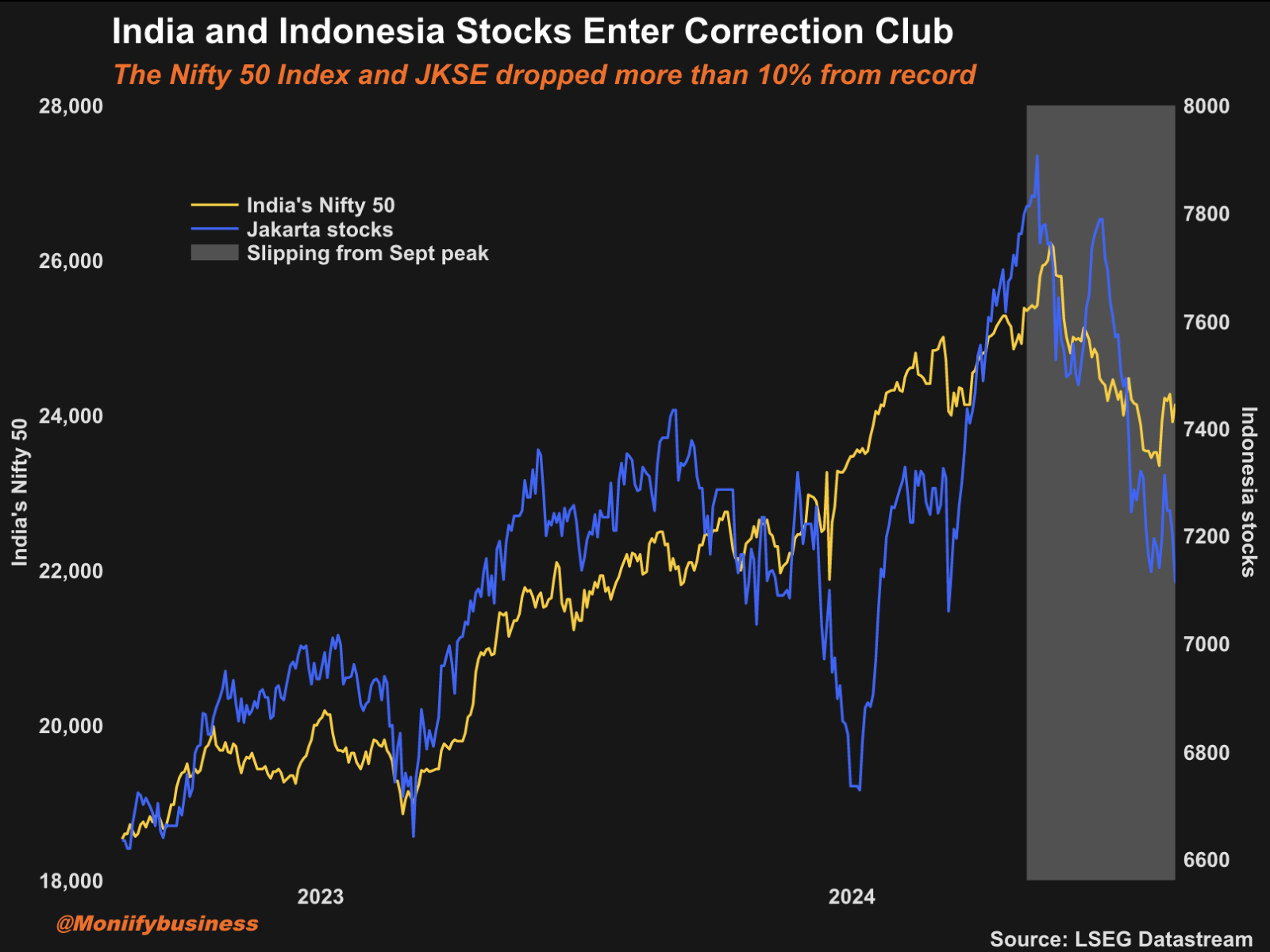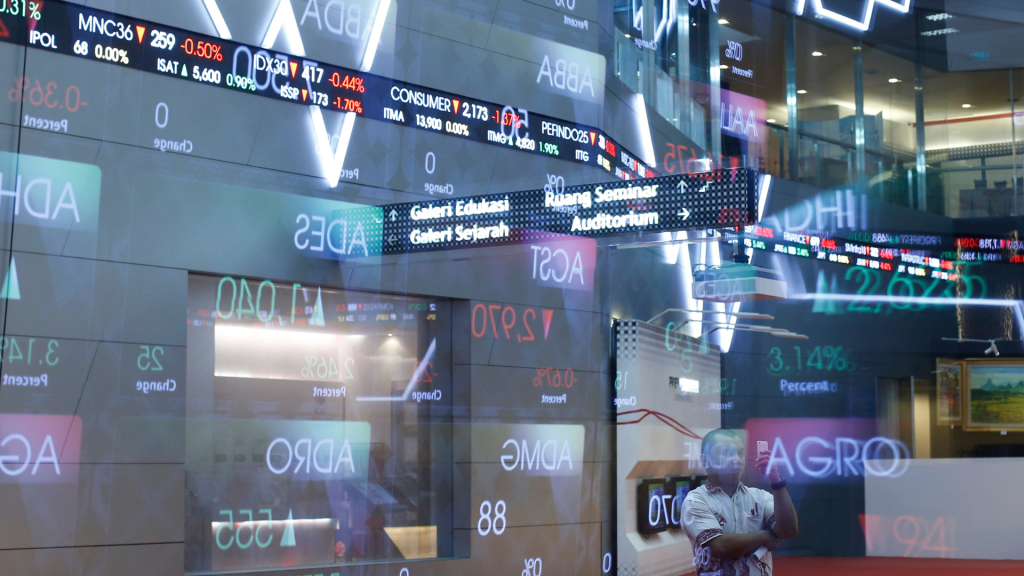Nobody knows what Donald Trump’s cooking, but traders aren’t sticking around to find out. Uncertainty is like kryptonite for emerging markets, which are seen as a high-risk play that gets love and dollars when times are good and… well you know the rest.
Indonesia’s Jakarta Composite Index has plunged 10% from its September highs, tagging along with India’s Nifty 50 into “correction” territory. That’s when markets see a decline of 10% or more from a high.
Mumbai’s retail-driven market has managed a bit of a bounce, as smaller investors keep plowing their salaries and savings into what’s been a red-hot play.
But both economies are now kinda stuck in the same boat: slowing growth, a surging dollar pressuring their currencies and foreign investors bolting from their stock markets.
And just to turn up the heat, Trump’s said he will slap 100% tariffs on BRICS+ countries (India is an OG) if they dare create a new trading currency (which they have obv threatened to do.) Headlines like that tend to supercharge the dollar and leave everyone else fighting over crumbs.
The Indian rupee has depreciated by 1.2% against the dollar in the past three months, while the Indonesian rupiah has slipped 4%.

The play
A simple play out there is to buy everything US or go for gold (read the MONIIFY take here) until the clouds clear.
Robins Joseph, research analyst at myguide2wealth, says the coming year will see the US dollar index rising amid the uncertainties of tariff wars, which will lead to “inflationary pressures in India.”
Then there’s China, the frenemy that India and Indonesia can’t seem to shake off.
Indonesia’s economy is bound tightly to China’s, and with China moving at a glacial pace with its recovery, Indonesia’s feeling the burn.
India isn’t immune, either. Despite the less-than-cozy relationship between the two countries, India still imports a massive $102 billion worth of goods from China every year.
The fast lane… is actually slow
Speaking of struggles, both countries are seeing their growth engines sputter.
- India’s GDP growth has slumped to 5.4% — an eight-quarter low — due to shrinking consumption and cautious spending from both the private sector and the government.
- Meanwhile, Indonesia isn’t faring much better either, with third-quarter growth at its slowest in a year. Adding to the drag is a looming VAT hike to 12%, which could put even more pressure on households already struggling with living costs.
Bring on the seasonal joy
Despite the doom and gloom, the festive season can be very good for business. Historically, the Jakarta Composite tends to “perform better in December and January,” Herditya Wicaksana, head of retail research at MNC Sekuritas, told MONIIFY. That’s a potential 4% to 6% boost on the horizon.
Commodity prices usually climb around this time too, giving an economy that exports palm oil, petroleum gas and copper ore a solid boost. There’s also optimism for better macroeconomic data, signaling healthier growth. Which is to say, there’s something to stay those jitters in Indonesia.
India, on the other hand, could do with some better fundamentals. The World Bank, IMF and Goldman Sachs estimated GDP growth of around 6.3% for the current fiscal year, which ends in March. The 5.4% growth for the second quarter, revealed on Friday, was a shocker.
That makes the central bank’s decision on key lending rates, which is due Friday, a crucial one for the Indian economy.
The RBI skipped a rate cut last time round, even though the Fed and other major central banks went for it. Most indicators suggest it will need to reduce borrowing costs to get the economy kicking again, but could be held back by price worries. Inflation just jumped to 6.21%.
The dilemma is one other thing weighing on markets.






